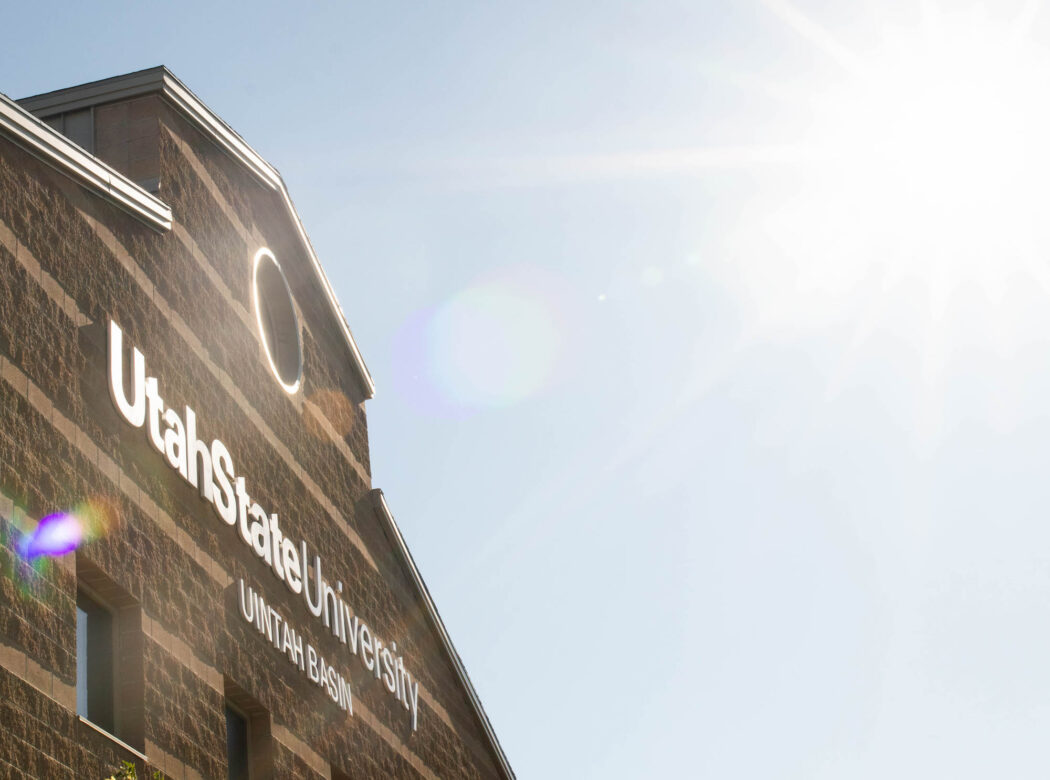The value of USU Uintah Basin research
Utah State University’s Uintah Basin campus offers a variety of research opportunities to its students.
One opportunity offered is the Uintah Basin Student Research Internship Program.
The program chooses three students each summer. The students select a mentor, design a project and present their work.
The opportunities include the evolution or ecology of reptiles and amphibians, wildlife ecology, and the chemical ecology of blue-lined octopus.
The evolution or ecology of reptiles and amphibians area allows researchers to work on understanding the evolution of toxic salamanders and their neurotoxin resistance.
Another option is working on projects surrounding amphibian and reptile diversity at the Dinosaur National Monument or studying the thermal ecology of Uintah Basin lizards.
Those interested in wildlife ecology can monitor wildlife in the John Wesley Powell National Conservation area. Through this process, they can work with remote camera traps and a database of photos.
In the chemical ecology of blue-lined octopuses, researchers learn about the tetrodotoxin level in this octopus species and investigate why they may differ between octopuses.
Charles Hanifin, a USU biology associate professor, conducts evolutionary ecology and genetics research at the Uintah Basin campus.
According to Hanifin, Uintah Basin offers research opportunities equal to, or superior to, what the Logan campus can offer.
Some faculty have found it easier to connect students with research opportunities at a smaller campus like Uintah Basin.
“We have a small statewide campus here and so we have a lot of research opportunities on a per capita basis,” said Mark Chynoweth, a wildland resources professor at the Uintah Basin campus.
Other faculty said because there are more opportunities, there is no excuse for students not to utilize it.
“There are enough opportunities that everyone who wants to get experience can get experience,” said Becky Williams, a biology associate professor at Uintah Basin. “Students who want to do research really can. It’s not quite as competitive to find positions on campus.”
Many of the research classes at Uintah Basin only have four to six students. The small class size allows for a stronger connection between students and faculty and provides more research experiences.
“Having a mentor is really important,” Hanifin said. “We really emphasize providing research opportunities to early career students.”
Hanifin sees the value of students connecting with a faculty mentor and views research as a helpful system for creating mentorship opportunities.
He believes mentorship is especially valuable for first-generation students. Getting students involved in research early creates mentorship opportunities earlier in their education.
Hanifin said the faculty have a variety of specializations and can offer a wide range of opportunities. Some opportunities include working with the Bureau of Land Management and parks services.
Chynoweth has found many people are not sure what to expect from research.
“It exposes them to what research is really about. There are successes and failures associated with research,” Chynoweth said. “Going through the process with a mentor or with an internship coordinator, like myself, builds confidence for students so they know they can do it.”
Hanifin believes research gives a sense of belonging and allows students to engage in natural curiosity.
“Research is critical to the education of science undergraduates,” Williams said. “It’s such a great opportunity for students to get involved and actually work as a scientist before they graduate.”
-Carter.Ottley@usu.edu
Featured photo by Bailey Rigby

